It’s another “How To Nail The Shot” video!
The last “Nail The Shot” video was received incredibly well so I decided to do another, this time focusing on Costa Rica (although the tips apply to wildlife anywhere). In this video, we’ll look at eight different images from Costa Rica and talk about the challenges each presented, how I handled them, and what settings I used (I went into more detail this time as requested).
I think you’ll really enjoy this one – it’s packed with a TON of practical, field-tested advice that’s sure to help on your next outing (even if that outing isn’t in Costa Rica).
.
PS – If you enjoyed this post, I think you’ll REALLY like my e-books and video workshops! Thousands of pages and hours of videos filled with tips, tricks, and techniques – all my best content! Check ’em out – click here (hey, it’s free to look).

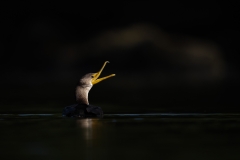
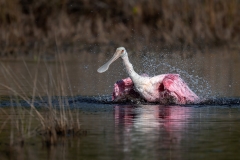
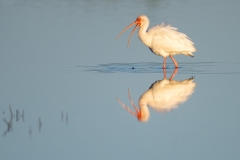
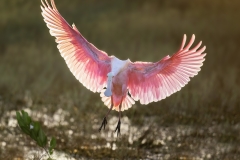
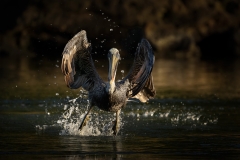
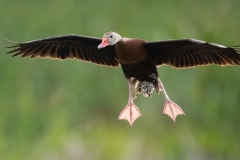

As usual Steve – great video. You present material in such an easy to digest style and your tips are so helpful. One question, for those of us with far less sophisticated rigs: with the stationary animals for whom you can use the relatively far lower shutter speeds and the wide ap – how do you get the whole animal in such sharp focus, not just the eye/head? For example, that gorgeous hawk with the head tilt – every feather is pin sharp, even tail feathers, claws, along with the eyes and beak. Thanks!
You mentioned that you like to avoid bright spots in the background that could lead the viewer’s eye to that area instead of the main subject. With all the other challenges to getting the “perfect” picture, how do you feel about cloning, burning, healing the bright areas in post process?
Like the video style
Wonderful video to hear your thinking processes for capturing the images. Since you were using the Sony a1, I was wondering if you still plan on letting us know your setup guide for the camera? A video would be great for this but if you don’t have the time for that, and printed guide of some sort would be so helpful for the many Sony shooters that follow your excellent posts. Thanks so much.
Thank you Steve another great tutorial
About the Southern Lapwing in flight, did I hear you say APS-C? Is there a crop on the camera?
It’s approximately what I cropped to in post. I wasn’t using the camera’s crop mode.
I would love to see a video of your post processing techniques for those rare pictures which don’t come out of the camera perfect.
Do you dodge and burn much? If so, how? New Lightroom masking? Background blur? Sharpening? And so on.
Thanks
I do publish post-processing tips from time to time, but the views / shares are so low that they aren’t really worthwhile. Still, I usually do one or two a year to reassure myself that they are, indeed, a bad idea 😀 so next time I may do a “start to finish” type pose-processing video.
Brilliant job, Steve. As always excellent presentation with plenty of inciteful info! You mentioned that you were at several locations in Costa Rica. I am going there next month and I would very much appreciate the name of the sites you visited. I have 3 of your books and am grateful you took the time and effort to put these together! Also brilliant idea with the “Nail the Shot” pubs. All the best!
We were mostly on the Osa Peninsula – there’s a 40K road that goes along the gulf / ocean. Most of the locations are along it – but there’s not really any specific “spots” where you see animals – you see them as you go in random spots. We also do a pontoon boat on the Sierpe River that’s really fun. I don’t recall the name of the provider, but there’s a dock and restaurant right there in Sierpe – can’t miss it.
Many thanks, Steve! I’m really looking forward to this !
Really nice presentation AND your books are marvellous. Thanks!
This is great. Thanks Steve. Since the start of the pandemic I haven’t had any real “shop talk” with nature photographers. This video is such a wonderful presentation, it reminds me that I’m missing a lot by hearing other photographers discuss how and why they did what they did.
Pete
Hi Steve, again a great video with lots of interesting information. Trouble is remembering much of it when out in the field but I think your advice of slowing down and hanging around to get further shots probably helps here.
Great video Steve. Thanks for all the effort that you put in here. Very informative, great shots and good advice. I think that the way you are breaking down the thinking for each shot is very effective with just enough reference to gear for context. Nicely done.
Best wishes, David.
Thanks so much! It was actually very difficult to strike that balance and I really appreciate the comment. This was NOT the first attempt at the video – we had a much longer version started and realized I was a little too long winded!
Hi, excellent points highlighted on good pictures. You have convinced me to buy a Sony Alpha 1. I am just not used to using their complicated menus yet. When are you going to put your talents to produce your (I repeat) your point of view on a new Video tutorial on “how to set up the best menus (123) on a Sony ICLE-1 (Alpha 1) camera. I have bought your 3 Secrets…for Nikon, but I always love to complete my learning curves with your video tutorials. Your are lucky and deserved to receive a Nikon Z9, I registered and signed… Read more »
I’m actually going one step further on the a1 – I’m writing a setup guide for wildlife photography for it. I show all the settings I change, why I change them, and how I use them. Too much for a video, but the guide will be for sale soon. It’s getting close 🙂 I will be putting out a YT video though for AF setup on the a1. It’s all in progress and the a1 stuff will be done way before the Z9 stuff. I’m too close to getting it done to let up now LOL!
I will buy a copy Steve! Sounds great
Great news Steve.I can’t wait to buy & follow your advice
Tanks for the good news and you fine work.
Steve, I noticed you keep mentioning 16×9. Are you shooting more 16×9 now? You said you’d crop a bit off the top and sides. Is there an advantage to 16×9 over 4×3 or other formats?
Depends on the shot. Use 3×2, 16:9, square, and 4:3. Each shot is different and I try to match the ratio to the shot (I often have this figured out as I shoot in the field, kind of anticipating the shot). The crop always serves the image though, never the other way around (i.e, I don’t go out looking for 4:3 or 16:9 ratio shots).
Thanks Steve. I usually shoot in 4×3, but sometimes I’ve actually switched to 16×9 and liked what I got. I think I’ll put a little more effort into deciding what format is better for my shots. Great video by the way!!
Great Steve – I’m headed to a wildlife safari area in Texas and will be really close to a lot of animals. This video will help me a lot. Glad when you showed Auto Iso vs Non Auto Iso. I learned from you about man + auto Iso and use it all the time. tks!
Steve, as someone who handholds my D500/500 PF combo for birds in flight because of the freedom of movement it provides, I have trouble wrapping my head around the fact that you use a tripod for most of your shots. Is it just because your 600mm is so heavy, or would you also suggest a tripod for those of us who have lighter gear?
The size and weight play a role, but the truth is, even shorter lenses benefit from tripods. I’ve been using them forever and in my experience, a good quality tripod and gimbal really don’t get in the way. I’m typically as fast with that setup as I am with handholding and there are times I really prefer the tripod, it helps keep me more controlled. I also like that I can drop to precariously low shutter speeds when needed and get cleaner shots. 😀
Totally agree Steve! Took me a few months to get comfortable with a tripod and gimbal head ..but now that I’m used to it and had time to go back and forth from handheld to tripod I can see the benefits of good support
Another fantastic video, thank you so much for sharing. Every time I watch one of your videos I go grab the camera and head out to see what I can do, always fun.